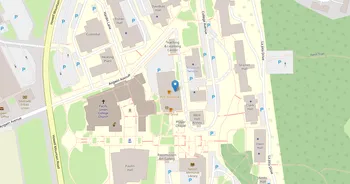Palo Alto University (PAU) : Overview, Courses, Scholarships & Rankings
About Palo Alto University
Set near the foothills of Silicon Valley, Palo Alto University is known for its deep focus on psychology, counseling, and the social sciences. Courses lean into evidence-based practice, research literacy, ethics, and cultural humility, creating a close-knit learning environment where discussion and reflection matter as much as exams.
Students tap into a thoughtful mix of resources: an on-campus training clinic that serves the community, research and assessment labs, a quiet library, writing and tutoring support, advising, and wellness services. Campus life centers on speaker series, peer-led groups, mental health advocacy, and service projects. And when you need to exhale, nearby trails and Bay Area arts are right there.
Career preparation runs through supervised fieldwork, mentorship, and connections with regional clinics, schools, and nonprofits. The culture feels collaborative and purpose-driven, with a practical streak that prizes real-world readiness. Distinguishing features include strong community engagement and a steady blend of research and practice. It's serious work, but it doesn't feel stiff.
Key Institutional Details
Contact & Profile
Academic & Institutional
Academic Programs & Fields of Study
Palo Alto University (PAU) offers 4 degree programs across 2 major academic fields, graduating approximately 355 students annually. The most popular fields by graduate volume are Psychology (2 programs, 202 graduates) and Health (2 programs, 153 graduates). Explore program details, award levels, and graduate demographics below.
Psychology (2 programs, 202 graduates)
Psychological Sciences, Mental Health and Behavioral Studies
| Program Name | Graduates | Gender Distribution | Award Levels | CIP Code |
|---|---|---|---|---|
| Clinical Psychology | 160 |
|
Master's
Doctorate (R)
|
42.2801 |
| General Psychology | 42 |
|
Bachelor's
Master's
|
42.0101 |
Health (2 programs, 153 graduates)
Healthcare Professions, Medical Sciences and Clinical Practice
| Program Name | Graduates | Gender Distribution | Award Levels | CIP Code |
|---|---|---|---|---|
| Mental Health Counseling | 96 |
|
Master's
|
51.1508 |
| Marriage and Family Therapy | 57 |
|
Master's
|
51.1505 |
Tuition, Fees & Estimated Costs
Overview of tuition rates, housing, and other annual education expenses for undergraduate and graduate students
Financial Aid & Student Support
Summary of scholarships, grants, student loans, and financial aid statistics for undergraduate students
Student Success Metrics
Graduation rates and post-graduation earnings to help assess student outcomes and long-term value of education.
Loan Burden & Repayment Outcomes
Breakdown of loan repayment rates and student debt levels by income and dependency status.
Frequently Asked Questions
Find answers to the most common questions about Palo Alto University (PAU)
How much does it cost to attend Palo Alto University (PAU)?
The annual tuition at Palo Alto University (PAU) is $23,096 for in-state students. When including room and board, books, and other expenses, the total estimated cost is approximately $23,096 for in-state students.
Data based on IPEDS program completions for 2022-2023 academic year. Tuition and cost estimates are approximate and may not include all fees, personal expenses, or transportation costs.
What academic programs and degree levels does Palo Alto University offer?
Palo Alto University (PAU) offers 4 academic programs across 2 major fields of study, with available degree levels: Bachelor's, Master's, Doctorate (Research).
Most popular program areas include:
- Psychological Sciences, Mental Health and Behavioral Studies (2 programs)
- Healthcare Professions, Medical Sciences and Clinical Practice (2 programs)
Data based on IPEDS program completions for 2023-2024 academic year. Numbers reflect programs where students graduated, not all offered programs.
What is the average salary for Palo Alto University graduates?
Palo Alto University (PAU) graduates earn a median salary of $63,310 after 6 years and $83,187 after 10 years.
The salary range 10 years after graduation spans from $56,893 (25th percentile) to $99,108 (75th percentile).
Data based on IPEDS for 2022-2023 academic year. Salary data reflects graduates who received federal financial aid (approximately 60% of all graduates). Actual earnings may vary significantly based on program, location, and individual circumstances.
Related Universities




Found something useful? Help others discover it too! Share with friends, on social media, or save for later - every share helps someone find the information they need.